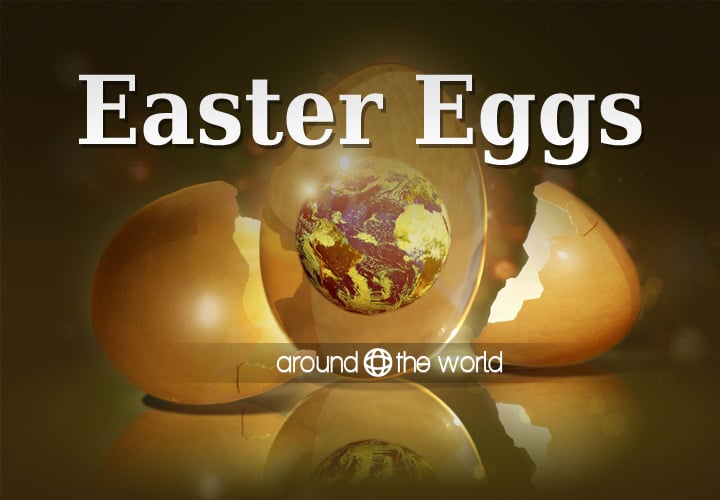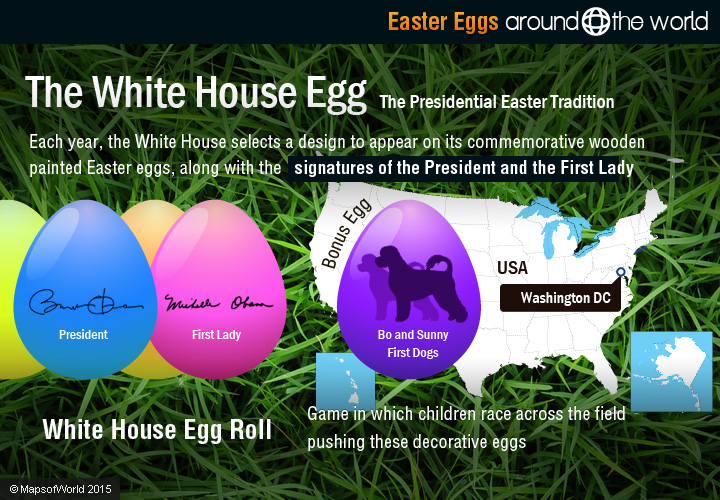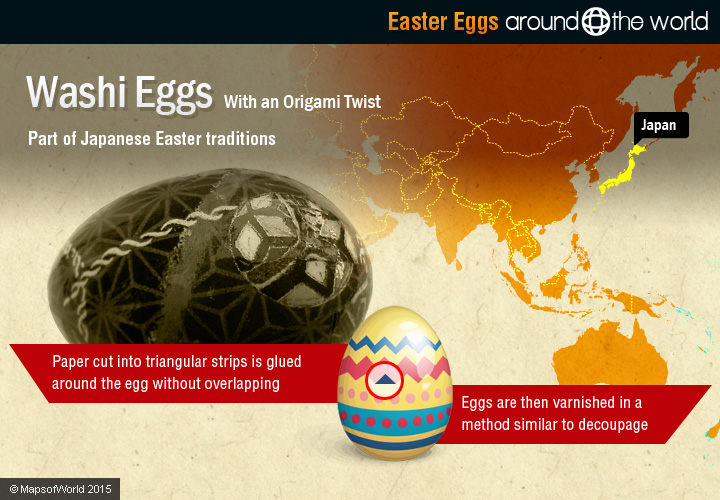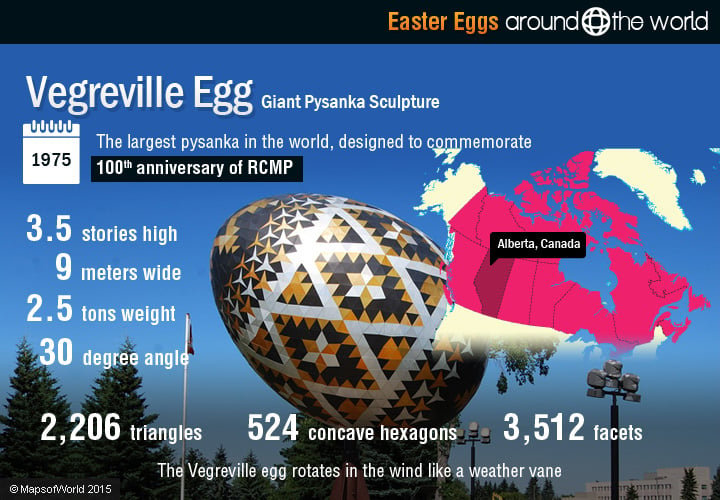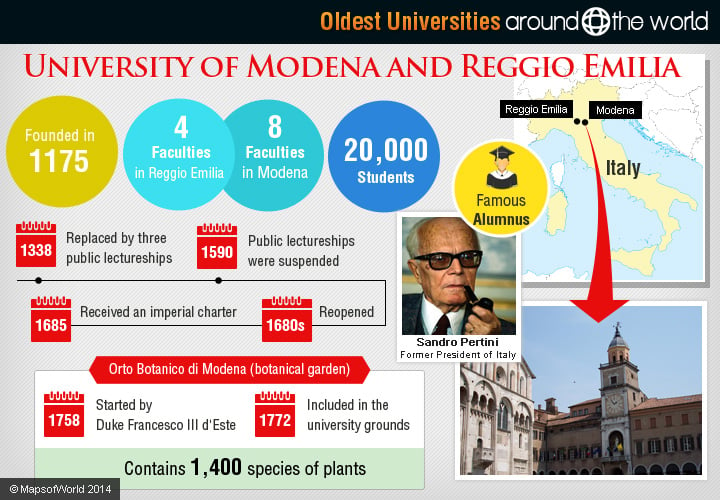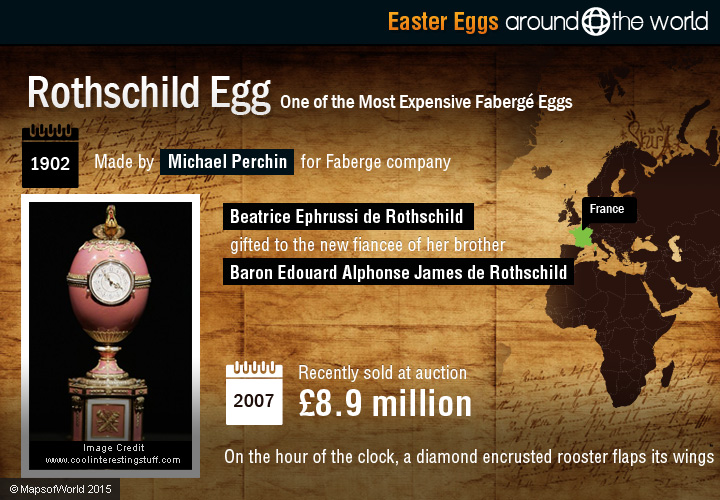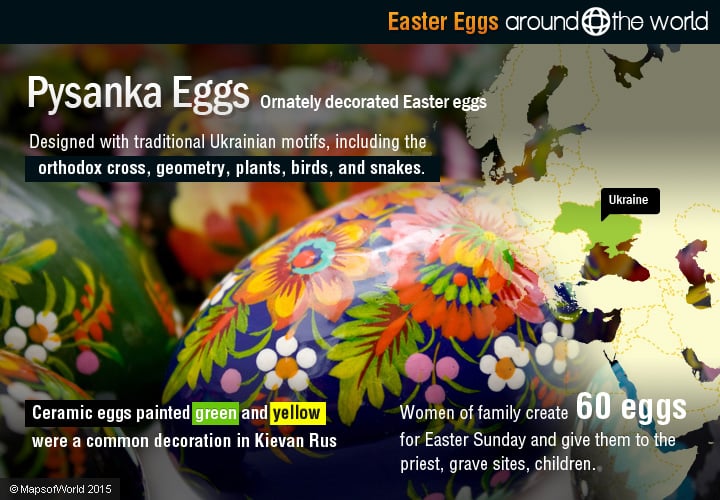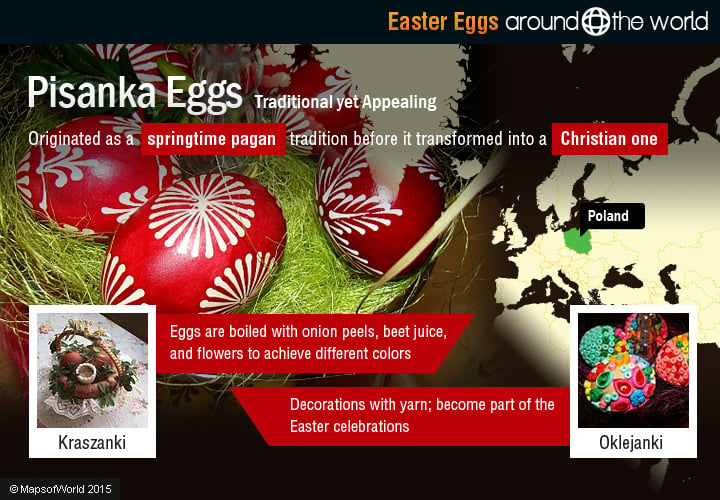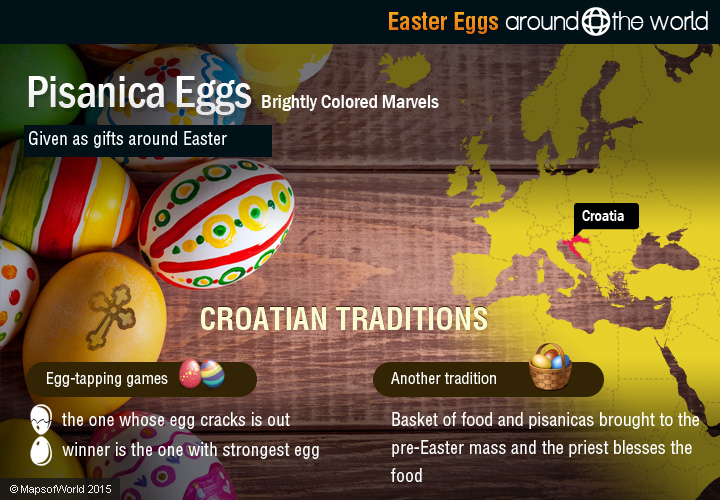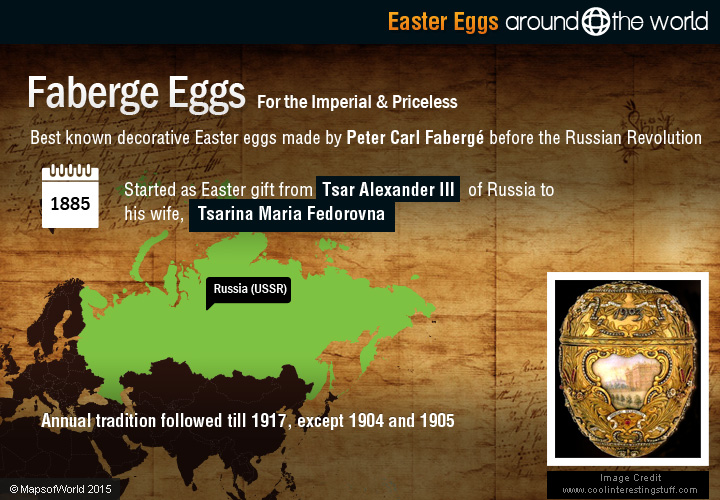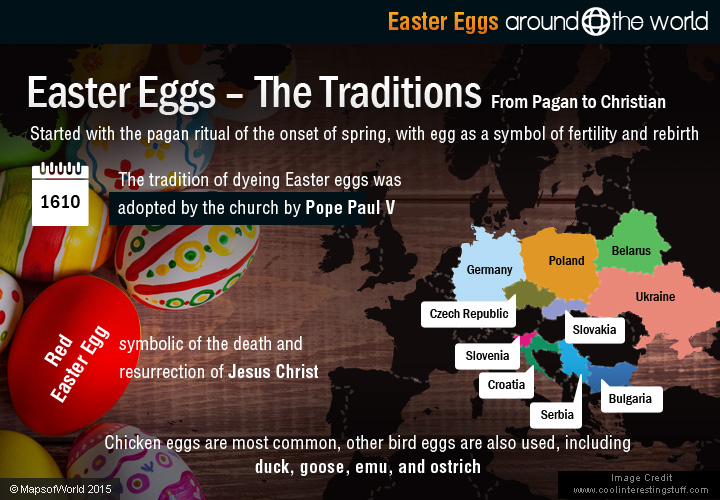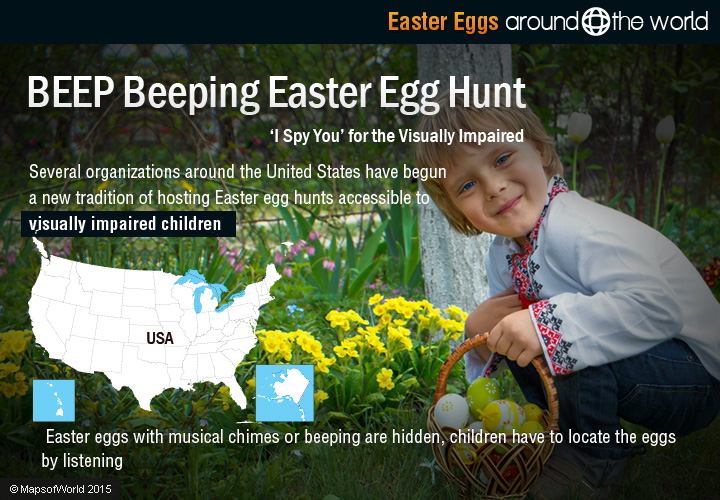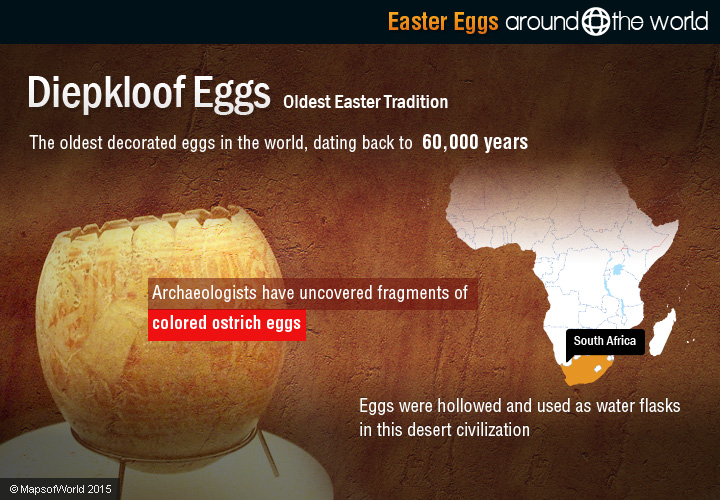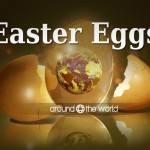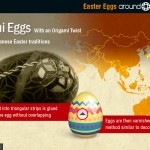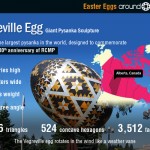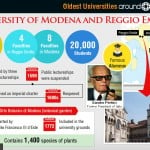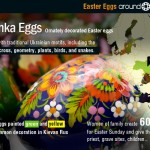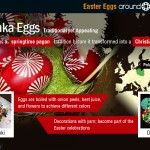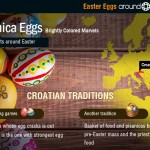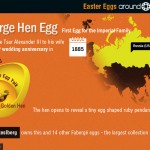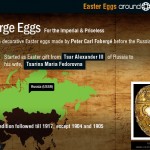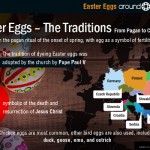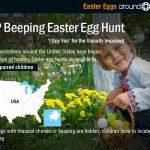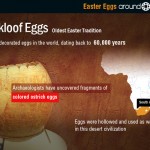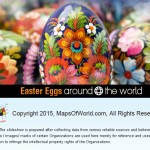The practice of decorating Easter eggs is a tradition shared by many cultures around the world, from children using vegetable dye to decorate their eggs, to professional artists creating intricate and elaborate egg designs. Though today, decorating eggs is associated with the Christian holiday of Easter, the tradition extends beyond that, even 60,000 years ago in Africa and about 5,000 years ago in Egypt and Sumeria. The pagan ritual of the onset of spring, with the egg as a symbol of fertility and rebirth, was adopted into the Christian tradition of Easter.
Eggs, along with meat and dairy, were prohibited from consumption during Lent. The eggs that chickens produced during Lent were hard boiled to last longer, resulting in many egg dishes being prepared on Easter. The Eastern Orthodox tradition of dyeing Easter eggs red is symbolic of the death and resurrection of Jesus Christ. The shell represents the tomb, the cracking of eggs is the release and the resurrection, the hollow eggs are the empty tomb, and the red signifies his blood. The tradition of dyeing Easter eggs was adopted in 1610 by Pope Paul V.
The tradition of coloring eggs has evolved, with more complex designs and techniques. The artistry has especially spread throughout the Slavic communities, including Czech Republic, Poland, Ukraine, Bulgaria, Belarus, Slovenia, Croatia, Slovakia, Serbia, and the Sorbs of Germany. Easter egg decorating techniques include the wax relief method, dip dyeing, decorating using straw, patterned tape, applique, carving, drilling, and pin scratching.
Though chicken eggs are most common, other bird eggs are also used, including duck, goose, emu, and ostrich. Ostrich and emu eggs are large and sturdy, making them perfect for carving and drilling. Easter eggs are sometimes hard boiled and then dyed, and eaten afterward, but the eggs can also be hollowed out to preserve the eggs long after they are painted. This is done be piercing a small hole in the top and bottom of the egg and blowing the raw egg out.
Fabergé Eggs (Russia) – For the Imperial, Priceless
The best known decorative Easter eggs were made by Peter Carl Fabergé, a Russian jeweler who left the country after the Revolution. Fabergé was first commissioned by Tsar Alexander III of Russia to create an Easter gift for his wife, Tsarina Maria Fedorovna in 1885. Tsarina loved the gift so much that it became an annual tradition and she received a new Fabergé egg each Easter each year until 1917, excluding 1904 and 1905. The son of Alexander III, Tsar Nicholas II continued the tradition, commissioning a new decorated egg each year for his wife, Alexandra Fedorovna as well as his mother, Maria. About 50 unique Easter eggs were created for the family between 1885 and 1917, which are now known as the Imperial Eggs, all designed by Fabergé or his company. Additional Fabergé eggs were designed for other clients, including the Rothschild family, the Yusupovs, and Alexander Kelch, bringing the total to about 65.
Fabergé eggs were constructed from gold and precious metals and decorated with gemstones and intricate designs. Every egg had its own unique design, the tiny eggs when opened, contained a surprise within. Fabergé used a technique called guilloché with engravings and intricate designs, covered in a thin layer of translucent enamel.
Faberge Hen Egg (Russia) – First Egg for the Imperial Family
In 1885, Tsar Alexander III asked a jeweler to create a unique gift for his wife, Tsarina Maria Fedorovna, to commemorate their 20th wedding anniversary. Tsar Alexander had Fabergé design and create the egg with inspiration from a decorated egg that Tsarina had seen at the house of her aunt, Princess Vilhelmine Maria of Denmark, as a child.
The first commissioned Imperial Fabergé Easter egg was simple at first glance: a realistic looking hen’s egg made of gold coated in white enamel. The egg opened to reveal a matte yellow gold yolk hidden inside. The egg yolk itself opened, and inside of it was a tiny golden hen with ruby eyes. The hen opens to reveal a tiny egg shaped ruby pendant.
Today the egg is in the collection of Vikto Vekeslberg, a Ukrainian and Russian billionaire who owns 15 Fabergé eggs, with the largest collection of them in the world.
Rothschild Egg (France) – One of the Most Expensive
One of the Fabergé eggs created for someone other than the Imperial family was the Rothschild egg, which was created by the Fabergé jewelry company in 1902, but made by Michael Perchin. The egg was commissioned by Beatrice Ephrussi de Rothschild as a gift for the new fiancée of her brother, Baron Edouard Alphonse James de Rothschild. The Rothschild egg is one of the most famous Fabergé eggs because it was one of the most expensive ever made, and was sold at auction for £8.9 million in 2007. The decorated egg is set upon a pedestal and made of gold and pink enamel, and prominently features a clock. On the hour, a diamond encrusted rooster flaps its wings.
Pysanka Eggs (Ukraine) – Ornately Decorated
The pysanka in Ukraine are ornately decorated Easter eggs that use the wax-relief method. Pysanka are designed with traditional Ukrainian motifs, including the Orthodox cross, geometry, plants, birds, and snakes. The pysanka probably originated in ancient times as a pagan ritual, celebrating the sun god, birds, and rites of spring as a symbol of rebirth. Pieces of decorated eggs dating back to the 5th millennium BC have been found in Ukraine. When Christianity came to Ukraine, egg decoration was adapted as a tradition for Easter. Ceramic eggs painted green and yellow were a common decoration during the period of Kievan Rus’ and are found along with human remains in grave sites.
Many legends and superstitions surround the pysanka Easter egg painting tradition. It is believed to be a a way to ward off evil. Some believe that they must continue to make the eggs or an evil serpent will destroy the world, while others believe the egg traditions stemmed from the Virgin Mary or Mary Magdalene who saw miracles in their eggs at the time of Christ’s crucifixion. Pysanka are made to be given as gifts, with different meanings for each design and color. Women of the family would create over 60 eggs for Easter Sunday and give them away to the priest, children, and grave sites.
Vegreville Egg (Vegreville, Alberta, Canada) – Giant Pysanka Sculpture
The Vegreville egg is a giant pysanka sculpture located in Vegreville, Alberta, Canada. The egg stands 3.5 stories high, and 9 meters (31 feet) wide, with a weight of about 2.5 tons (5,512 lbs). The sculpture was designed by Ukrainian Canadian artist Paul Maxum Sembaliuk. It was commissioned by the town of Vegreville to represent the local Ukrainian culture and to commemorate the 100th anniversary of the RCMP (Royal Canadian Mounted Police).
The Vegreville egg, completed in 1975, is the largest pysanka in the world. The egg is constructed of Anodized aluminum to ensure the colors would remain vibrant over time. The egg was built with the help of computer scientist, Ronald Resch, with a puzzle of laser-cut tiles to create its shape: 2206 triangles and 524 concave hexagons (stars). It has 3,512 facets and is tilted at a 30 degree angle. The Vegreville egg rotates in the wind like a weather vane.
Pisanica Eggs (Croatia) – Brightly Colored Marvels
The Croatian traditional Easter egg is called the Pisanica, which is quite similar to the Ukrainian pysanka. The pisanica are brightly colored with dyes and decorated with images like crosses, doves, and flowers, as well as words conveying good wishes. They are given as gifts during the Easter Eve. The Croatian traditions include games in which a player taps the egg of the other player, and the one whose egg cracks is out. The winner is the person with the strongest egg. Another tradition involves carrying a basket of food and pisanicas to the pre-Easter mass, and the priest blesses the food.
One big tradition is the giant pisanica placed in the middle of the square in front of Zagreb’s St. Mark’s Church. The giant pisanica is painted in local styles with a realistic image of the church and a symbol of the city. The giant egg stands 2.05 meters tall and 1.5 meters wide.
Pisanka Eggs (Poland) – Traditional yet Appealing
The Polish pisanka is closely related to the Ukrainian and other Slavic painted Easter egg traditions. Polish Easter egg painting also originated as a springtime pagan tradition before it transformed into a Christian one. Pisanka are made in a few varieties and techniques, which traditionally use natural methods to dye Easter eggs. One type of pisanka is the kraszanka, which is made by boiling the egg with ingredients like onion peels, beet juice, and flower varieties to achieve different colors. Other methods include the wax relief method, pin scratching, and applique, in which paper or cloth is adhered to the egg. The Oklejanki pisanka are decorated with yarn and become part of the Easter celebrations. Traditional Polish Easter egg decorations include lambs, crosses, and sayings.
Decorated Easter eggs are part of the Święconka celebrations on the Saturday before Easter. Święconka involves priests blessing the Easter baskets, which are filled with foods including eggs, bread, salt, and meats, each with a symbolic meaning. The decorated Easter eggs are exchanged on Easter Sunday morning.
Washi Eggs (Japan) – With an Origami Twist
The Easter egg tradition in Japan has evolved from dyed or painted Easter eggs – putting a Japanese twist on the art form with unique egg decorations. Japan, which is known for its paper folding art, origami, has applied these techniques to its eggs. Washi is a decorative paper used in origami or tape similar to masking tape, with light adhesive and beautiful prints. The paper is carefully cut into triangular strips, which can be glued around the egg without overlapping. The art form requires precise measurements, but can result in beautiful Easter egg designs. The paper-covered eggs are then varnished in a method similar to decoupage.
The White House Egg (Washington DC) – The Presidential Easter Tradition
Each year, the White House selects a design to appear on its commemorative wooden painted Easter eggs, along with the signatures of the President and First Lady. The keepsake Easter Egg is made in four colors: pink, blue, green, and orange. A bonus purple Easter egg, decorated with images of Bo and Sunny (First Dogs), comes with the set. This tradition began in 1981, when President Reagan hosted an Easter egg hunt at the White House, with eggs signed by various celebrities, athletes, and politicians.
The decorative eggs are part of the White House Easter celebrations, which take place on the South Lawn and include the White House Egg Roll, a game in which children race across the field pushing an egg. The event also features some beautifully decorated Easter eggs created by artists.
Diepkloof Eggs (South Africa) – Oldest Easter Tradition
The oldest decorated eggs in the world, dating back at least 60,000 years, were created in Diepkloof, South Africa. Archaeologists have uncovered fragments of colored ostrich eggs, which were intentionally decorated in various colors and carved with geometric designs and other patterns. The artifacts are some of the earliest known human works of art, predating even many cave drawings.
The decorated eggs were hollowed and used as water flasks, carrying about a liter of water, which was very important for this desert civilization. The painted eggs were symbols of expression of the group identity, and were sometimes traded with others as a form of goodwill and even currency. When the shells eventually broke, the pieces were repurposed to create beads and jewelry.
BEEP Beeping Easter Egg Hunt (USA) – I Spy You for the Visually Impaired
Several organizations around the United States have begun a new tradition of hosting Easter egg hunts accessible to visually impaired children. To ensure that children with visual impairments can participate in Easter events, like the traditional egg hunt, some cool Easter eggs with musical chimes or beeps have been created. The colorful eggs are hidden as usual, but the children locate the eggs by listening to the beeps or musical chimes. Parents of visually impaired children can order the musical eggs for their own hunt or take part in an event hosted at nearby local churches or community centers.
Sham el-Nessim (Egypt) – Smell the Wind of Spring
A national holiday in Egypt, Sham el-Nessim occurs every year after the Coptic Christian Easter celebrations. It is a harvest celebration that marks the onset of spring, and is celebrated by the whole country regardless of religious affiliations. The holiday’s name translates to “smell the wind,” and many Egyptians celebrate by spending the day outdoors, often picnicking along the Nile River. Like Easter traditions in the Slavic world, the traditions have origins date back to some 5,000 years ago. However, the event shares many similarities with Easter traditions. In fact, the Egyptian celebration may have been the first springtime egg decorating tradition.
As part of the Sham el-Nessim celebrations, Egyptians eat several traditional foods, including feseekh (salted fish) and hard boiled decorated eggs. During the time of the pharaohs, the eggs were dyed and hung as a symbol of rebirth. Today, families dye Easter eggs on the morning of the celebration and sometimes children compete for most colorful egg. Natural or artificial powdered dyes are used, the latter providing more vibrant colors.
Read More
- Most Expensive Cheese around the World
- Wines and Vineyards Around the World
- Drinks To Try Around the World
- Dance Forms Around the World
- Christmas Myths and Legends
- How to Say Hello around the World?
- The Dying Art of Hand Writing
- China to do away with one-child policy
- All you need to know about Halloween
- Top 10 Favorite Wines
- Ten Most Relished Foods Around the World
- Tribes Around the World
- Food Festivals Around the World
- Gay Laws Around the World
- Matriarchy Around the World
- Royal Families Around the World


